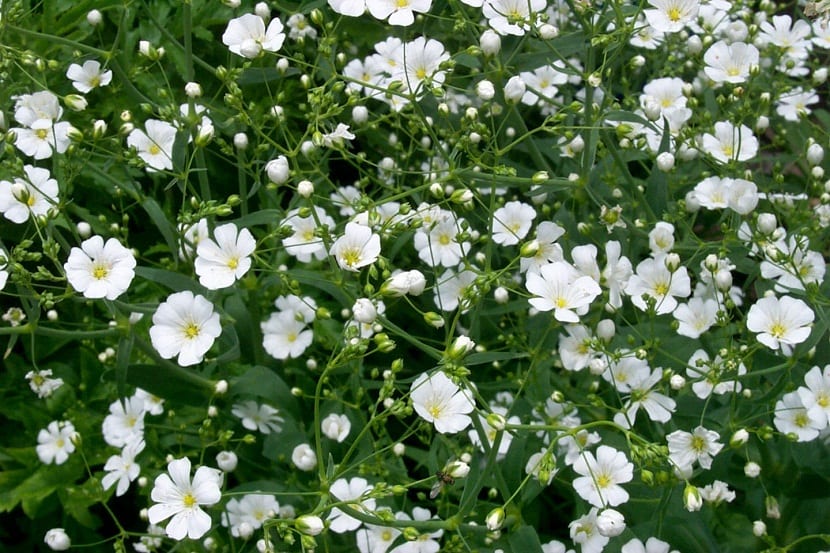
The Gypsophila or Gipsófila plant commonly known as the wedding veil, is native to Europe and belongs to a genus of herbaceous flowering plants in the Caryophyllaceae family. The name of the genus comes from the Greek gypos, what means "plaster" and philosophy, which means "friendship".
Described as one of the most charismatic plants, the Gipsófila hides a precious treasure underneath its rustic appearance. When they bloom, small white flowers are grouped together to create a delicate, airy appearance. It is an ideal option for both the garden and the home. While there are about 12 species of plants in this genus, they all share similar characteristics. It is widely used for flower arrangements and wedding bouquets.
Features

The maximum height of Gypsophila plants varies by species, but most grow from 0.5 to 1 meter in height, looking like small bushes with scattered leaves.
Plants in this genus generally have slender stems that can be erect or spread out. They are swollen at the node or where the leaves meet the stem. The green leaves are arranged along the stem and are lance-shaped, longer than they are wide.
The flowers of the Gypsyphile they are the most notable feature of the plant and bloom from July to October.
The many small, panicle-like flowers grow in clumps that are attached to openly branched stems. Most species develop white flowers, but some have shades of pink. These delicate flowers make attractive ornamental plants in the garden. They are widely used as fillers for flower bouquets.
The fruit is a spherical to elliptical capsule. They release several black seeds. The plants are reproduce by dispersing the seeds close to the original plant. A plant can produce several thousand seeds, however, they usually have a short dormancy period.
The root of the Gipsófila was used in other times, as a diuretic. Today, Clarins Laboratories uses gypsophila root for its cleansing properties to purify the skin.
Care and cultivation
The Gypsophila prefers a warm soil, with an alkaline and sandy pH. For best results, choose an area that contains chalk and is permeable. In certain cases, the fallen seeds will produce additional plants without any help.
When grown in a warm environment, this plant flourishes. This is the reason why Gipsófila, sometimes grows in crevices, stones and walls in dry regions. In the garden, it is important that you choose a semi-shady and windproof place for best results, as strong winds can damage the plant.
Alternative growing methods include sowing the seeds in the garden in early spring or in propagation trays. Just cover the small seeds, and leave a space of 15-20 cm.
Place the tray in a warm, sunny area for best results. This will create the ideal microclimate for the seeds to flourish. To prevent rotting, ventilate the propagator tray from time to time. Once the plants show four to five leaves, change them to a pot.

Mix one light application of a balanced organic fertilizer to the soil, before planting. In early summer, wet the plants with a liquid food to support strong growth.
Cut the stems for flower arrangements when half the flowers are open. You can use the cuttings to plant others. Simply place them adjacent to the mother plant or in a small pot with sandy soil.
The Gipsófila is a low maintenance plant, perfectly suitable for those with a busy schedule. In fact, it does not require a lot of water, unless it is in long periods of dryness.
Diseases or pests
It has some susceptibility to Botrytis Blight, causing the stem to turn gray and die. In that case, apply fungicide to protect the plant. It may need replanting or other support.
This watch out for slugs, aphids and caracoles.